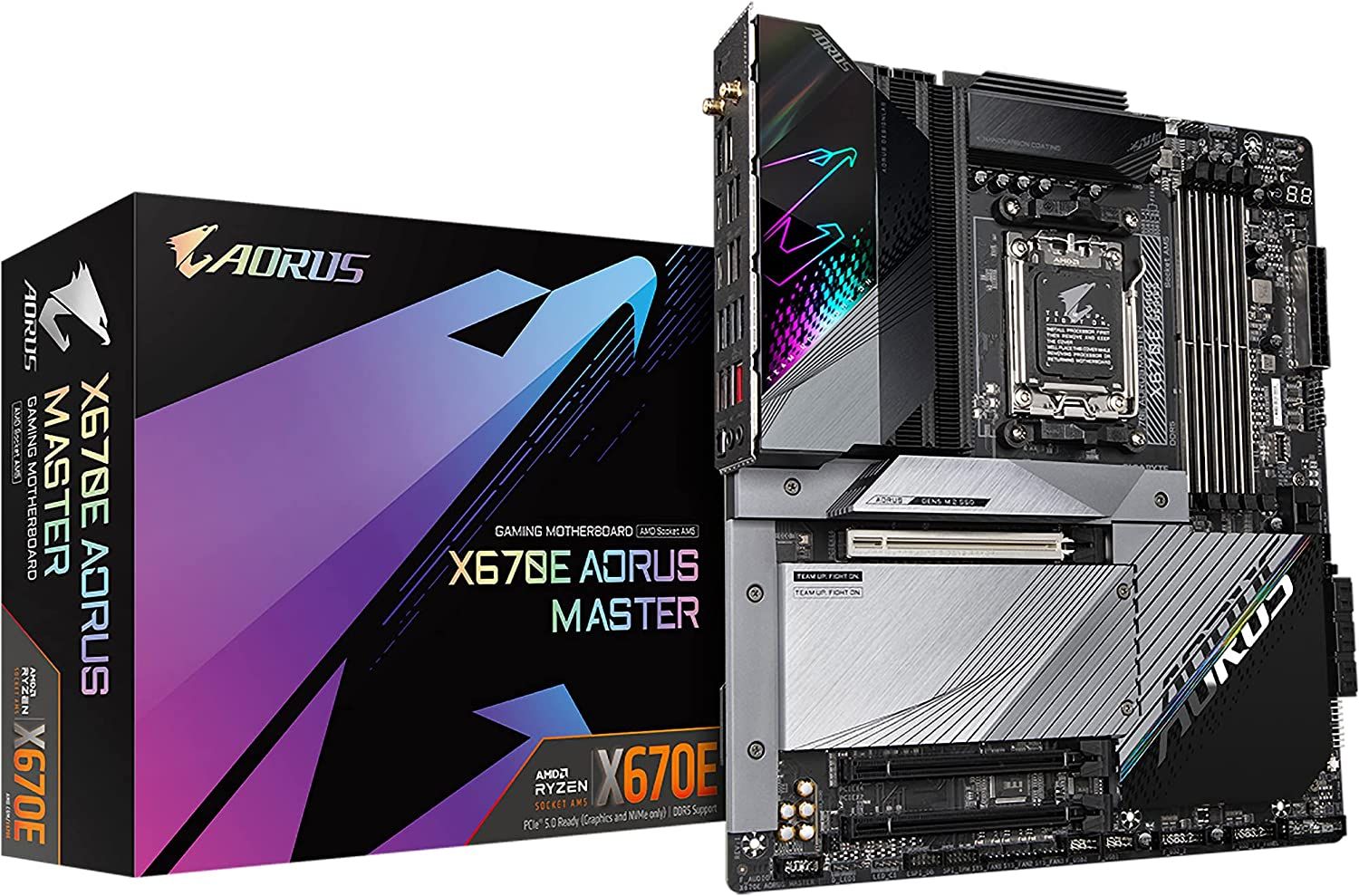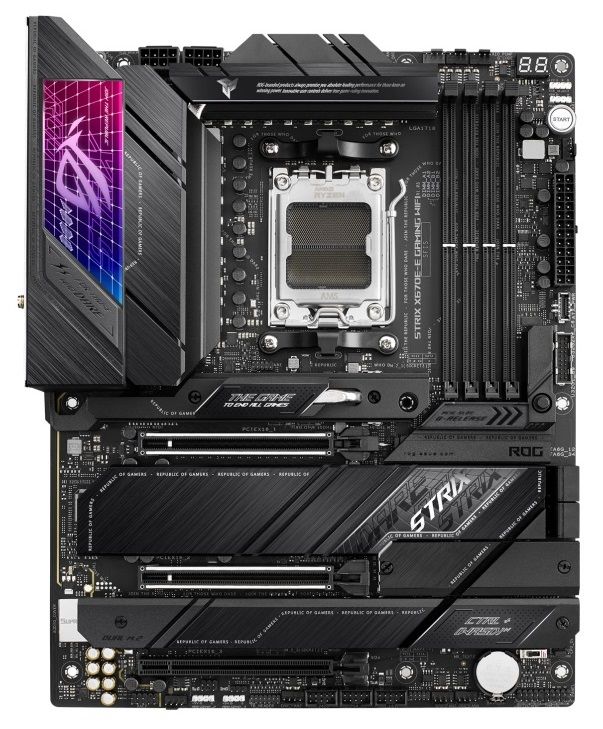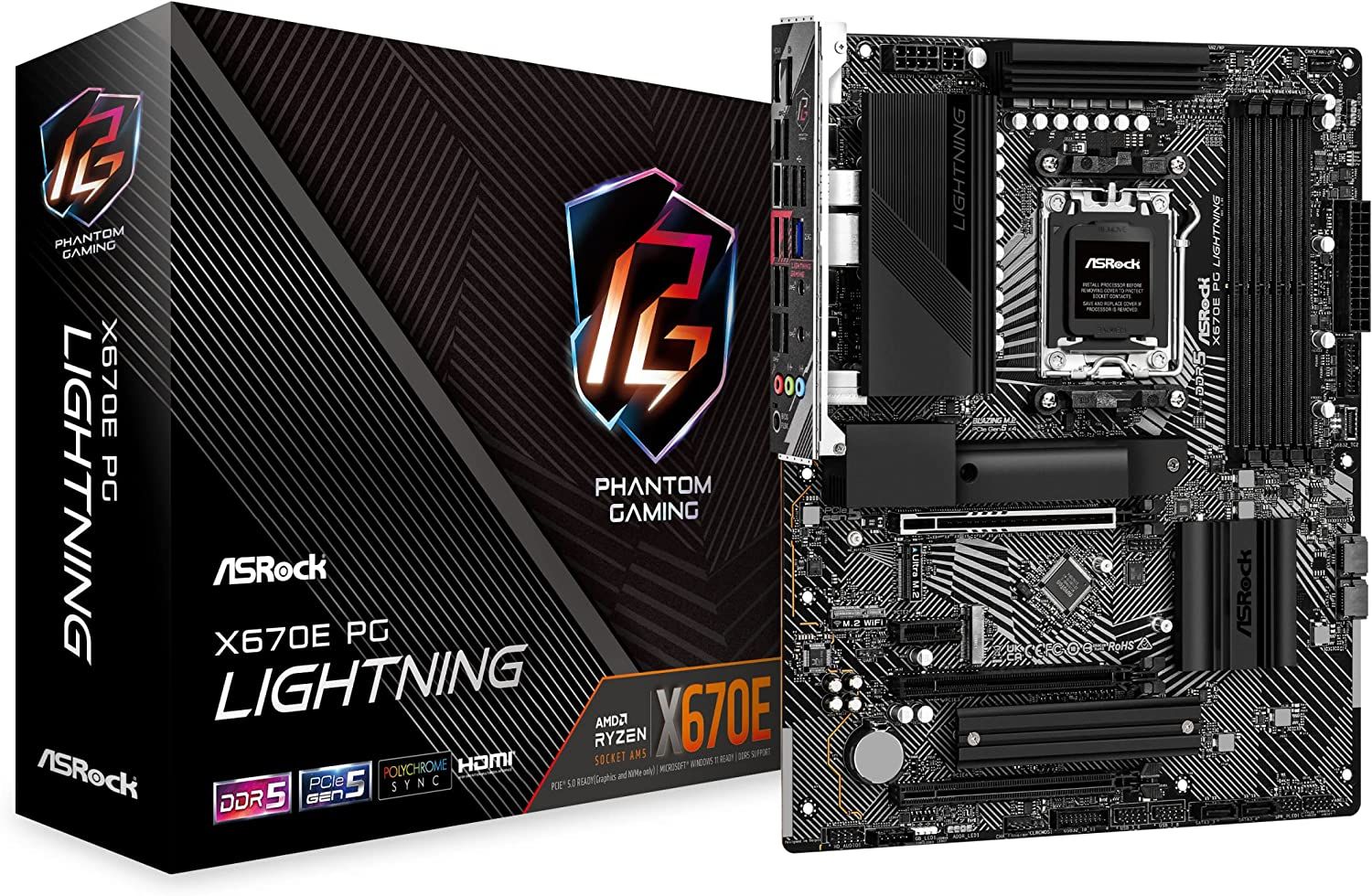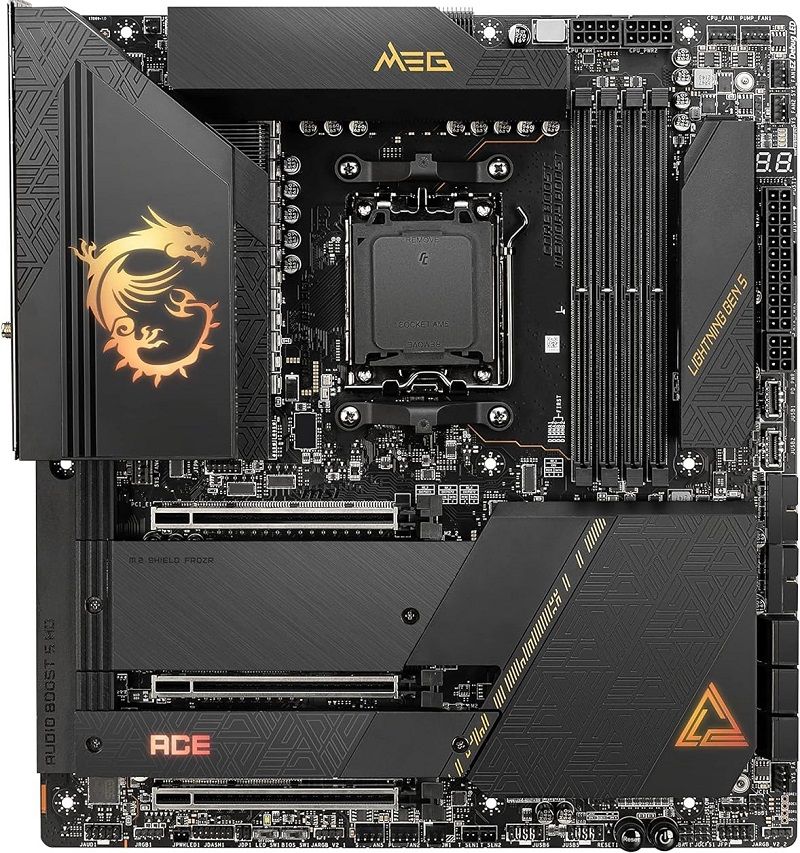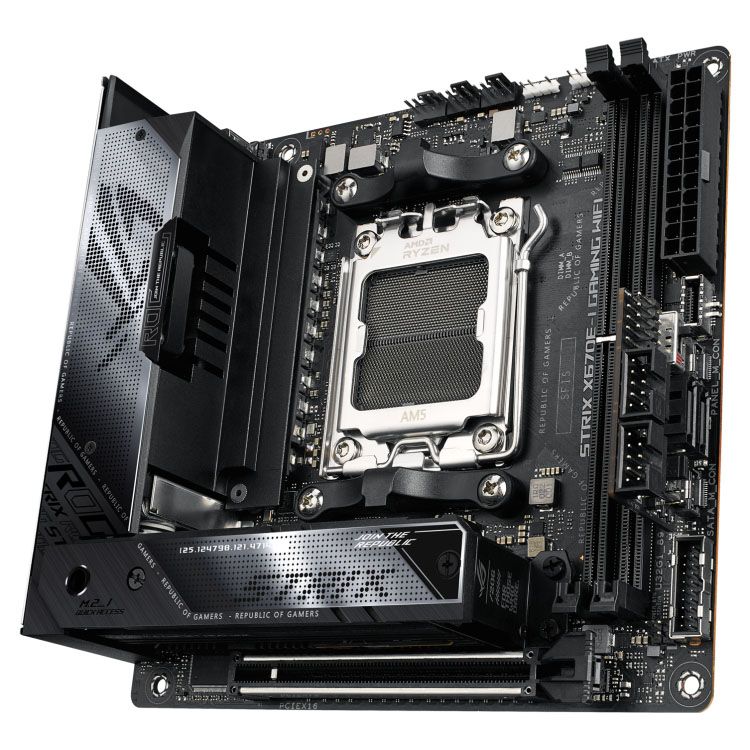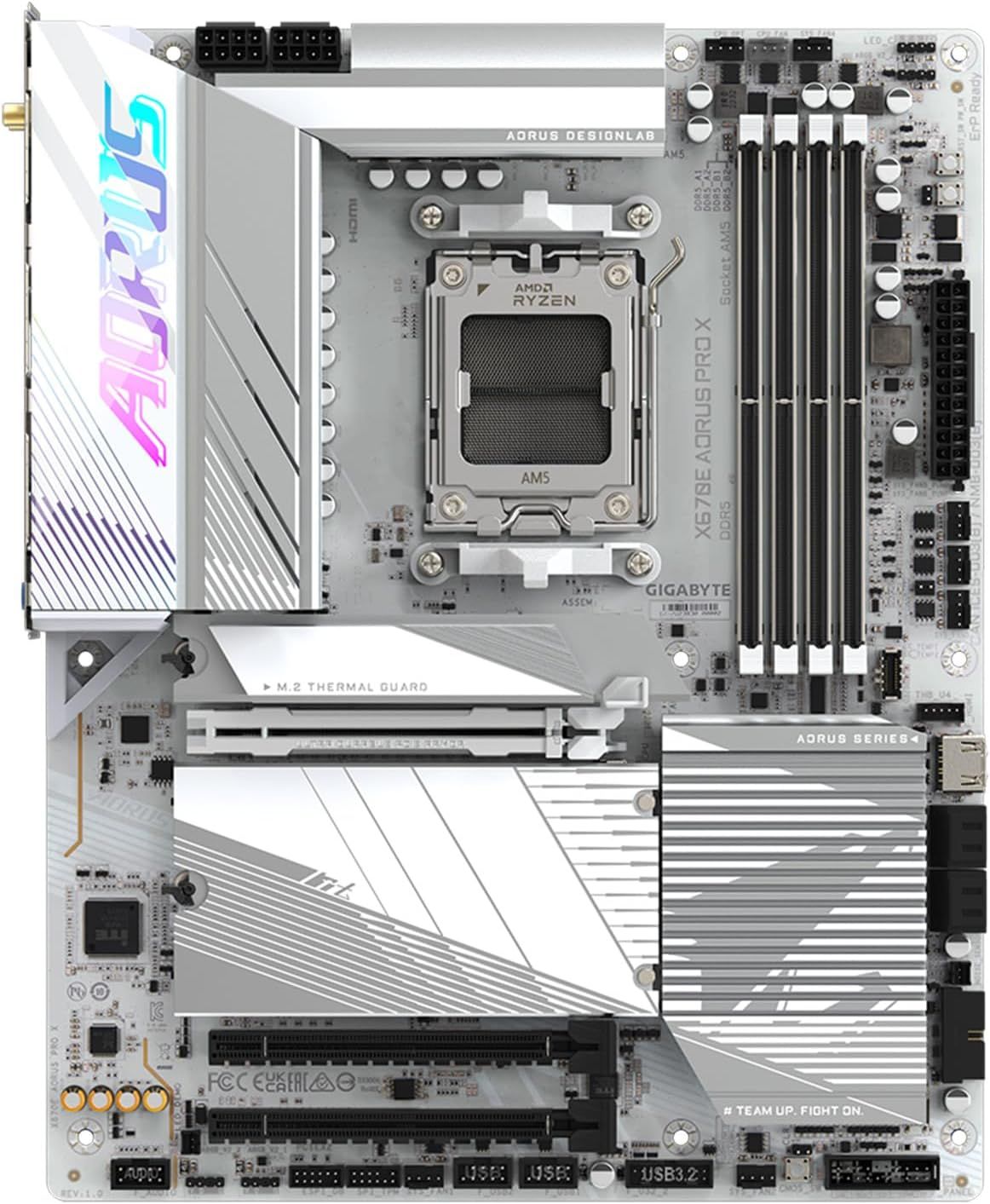With the entrance of the all-powerful and robust AMD Ryzen 7000 series processor, most motherboard makers are trying their best to show their power. More and more X670 motherboards are being manufactured with tons of upgrades focusing on DDR5 compatibility as the PCIe 5.0 becomes the standard.
The launch of the AM5 platform, not only marked the end of one of the most popular AM4 platform eras that started the Ryzen journey, but it also ended the DDR4 era permanently. AMD welcomed the AM5 platform in 2022 with a couple of chipsets for Zen 4-based Ryzen chips, which replaced the previous ones.
Some drastic changes were made, but the core functions of those chipsets were carried over. The X670 chipset took the X570 chipset's place but comes in two editions: the standard X670 and the X670E Extreme. While they both have identical features, the Extreme version provides PCI-E Gen 5.0 support for graphics cards. Even though the market has yet to see GPUs that leverage the high bandwidth of PCI-E 5.0, it opens up the door for next-gen GPUs.
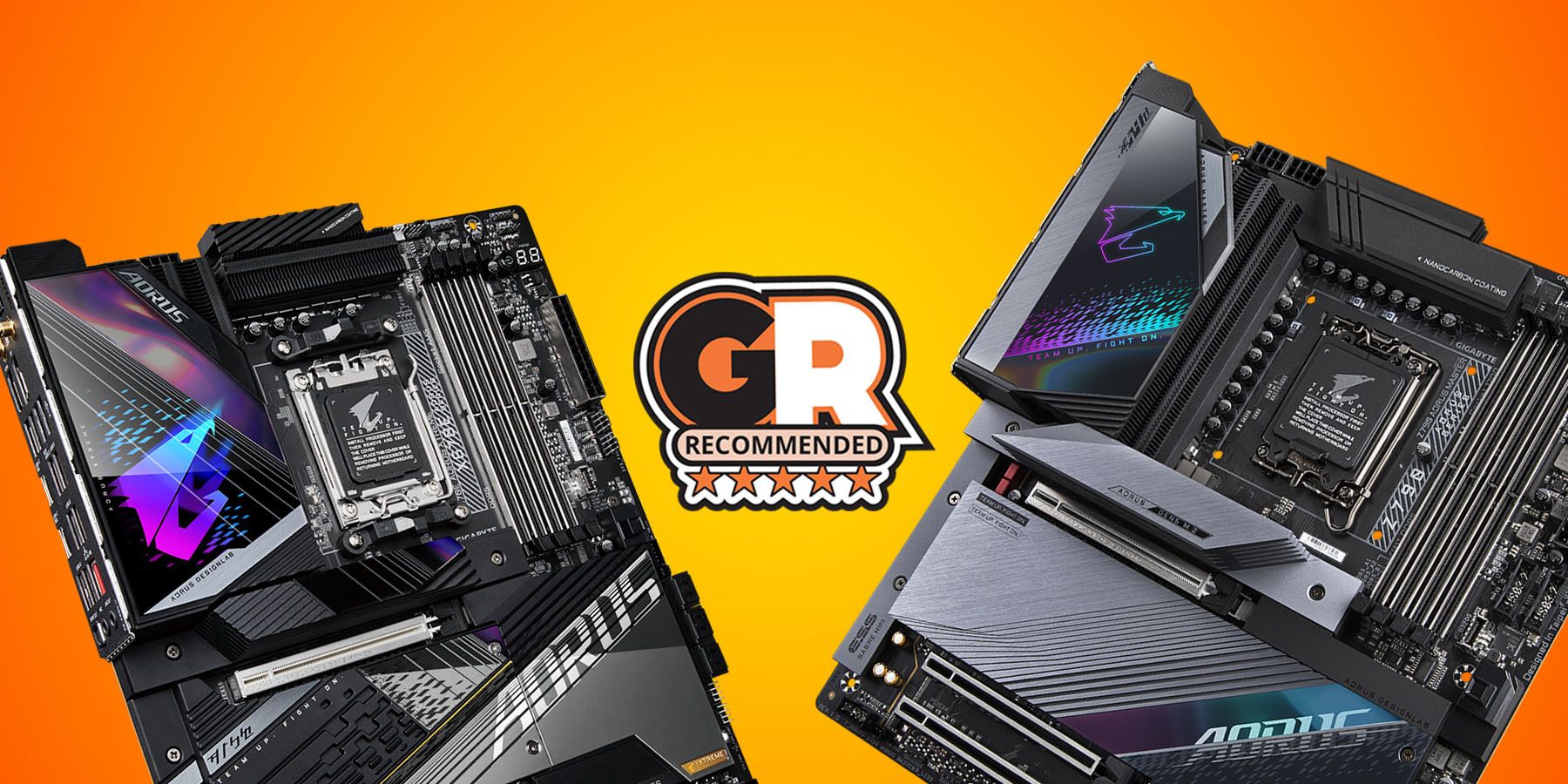
The Best Motherboards You Can Buy in 2024
Gigabyte is one of the most reliable vendors when it comes to motherboards. These motherboards offer unparalleled features for every dollar spent.
After scrutinizing dozens of X670 motherboards, the team at Game ZXC came up with the best six X670 chipset motherboards aimed at different requirements and budgets. From users needing to build a budget gaming build to those wanting to break overclocking records, the following list provides them with the best motherboards for each demand.
Update on May 13th, 2024, by Charlie Vin Tony: X670 motherboards are cementing their reputation as the cornerstone for high-performance gaming. The motherboards listed in this guide are not only compatible with the latest AMD 7000 series CPUs but also spearheading the adoption of PCIe 5.0 and DDR5 RAM, promising a transformative gaming experience.
Game ZXC's Picks for the Best X670 Gaming Motherboards
The X670E Aorus Master doesn't break a sweat, thanks to its powerful VRM that is capable of handling flagship CPUs like Ryzen 7950X or 7950X3D. While the $1000 X670 motherboards are mostly gimmicks to sell overpowered VRM and stuff that most users won't even touch, the Aorus Master has the most practical features for enthusiasts. The board features an E-ATX form factor with enlarged heatsinks spread all over the PCB, including the VRM, chipset, and the M.2 connectors, making sure nothing remains without a proper thermal solution.
The VRM is particularly noteworthy, featuring 16 VCore power phases dedicated to overclocking the CPU, using high-quality components for more reliability. Going to extremes won't be very difficult on this board and if anything goes wrong, there are Post Code and Debug LEDs to easily identify the underlying issue. Plus, there is a Power button on the PCB, which is underrated and very handy for overclockers to quickly switch the system off and on.

Best Gigabyte Motherboards for Gaming in 2024
Gigabyte is one of the most reliable vendors when it comes to motherboards. These motherboards offer unparalleled features for every dollar spent.
The board has excellent support for memory overclocking as well, and all users need is an AMD EXPO-compatible memory kit to reach up to 8000MHz. Coming to the PCI-E slots, there are 3x PCI-E x16 slots for GPUs and expansion cards with the primary one supporting Gen 5.0 bandwidth and the rest supporting Gen 4.0, all while being able to run on x8 and x4 modes respectively. This is not something that will affect the current gaming scene but could come as a useful trait sometime in the future. However, the connectivity of this board is something that will be usable right from the very start. On the I/O, users will find 10 USB-A ports and two USB-C ports, which is exactly what most PC builders want on a motherboard.
With the AI boom going crazier each day, motherboard manufacturers like Asus are trying to leverage its capability to make things easier for users. The Asus AI Overclocking is a fabulous thing to try on Asus boards and can prove to be the best friend of newbie overclockers. Nonetheless, AI itself cannot handle the voltages, so the actual VRM has to take care of it. The ROG Strix X670E-E is what users should look for if they are in search of a highly adept overclocking motherboard that doesn't cost a thousand dollars.
Although this board will appeal to content creators, it will be heaven-sent for gaming enthusiasts. The four M.2 and PCIe (2x PCIe 5.0) slots plus DDR5 ensure that the graphics card has more than enough space to run optimally. Moreover, the ROG STRIX X670E-I features two DIMM slots that can clock up to 8000MT/s and 20+2 power stages.
The 18 VCore power phases enhance overclocking stability for a longer duration. The VRM components are cooled by grooved heatsinks that use highly conductive thermal pads and a copper heat pipe. Similarly, each M.2 connector has its own aluminum shield. There is a Q-Code on top and a big Start button for enthusiasts, plus some of the troubleshooting stuff like Clear CMOS and BIOS Flashback buttons can be found at the I/O.
Connectivity is perhaps even better than that of the X670E Aorus Master, as, in addition to the 10 USB 3.2 Gen 2 ports, there are three USB Type C ports. This is a slight advantage, but it is essential for users who own multiple high-bandwidth USB devices. It also features dual USB, plus plenty of high-speed options. Gamers can expand the USB ports with the ROG FPS-II add-in card and ROG STRIX Hive.
It's surprising how a budget motherboard like the X670E PG Lightning surpasses even the more expensive motherboards in providing more connectivity ports. The PG Lightning is in a league of its own, even being cheaper than $250. There are 11 USB Type-A ports at the I/O and a 20Gbps USB-C port as well. Unfortunately, it lacks a built-in Wi-Fi adapter, but that's something users can buy separately and shouldn't be a big deal when they are getting insanely good value for their money.

The Best Budget Motherboards for Gaming in 2024
Building or upgrading a gaming PC doesn't have to be an expensive venture. Here are some of the best budget gaming motherboards money can buy!
The board features an ATX form factor with zigzag white accents on a black PCB. Although it's not the most attractive out there, it still looks better than a single-color design. Coming to the most crucial aspect, the PG Lightning boasts a 14+2+1 power phase VRM design, ideal for overclocking mid-range processors like Ryzen 7600X or 7700X. The board also has a native PCI-E 5.0 support for the first two PCI-E x16 slots, where if both are occupied, the first one will run at x16 and the second one at x6 mode. However, once the primary M.2 slot is used for the SSD, the second PCI-E x16 slot will be disabled. The rest of the slots and M.2 connectors are controlled via the chipset.
So, with this unit, users can seamlessly enjoy games like Fortnite or Cyberpunk 2077 in high settings without paying top dollar. The high-speed USB type C ports allow gamers to transfer data quickly, meaning adding or updating games is a breeze. Also, its compatibility with the latest graphic cards via PCIe 5.0 means that when it is combined with a card like the AMD Radeon RX 7900 GRE, users can expect outstanding performance even in the latest AAA titles, making this MOBO an excellent pick for players who want a quality gaming motherboard on a budget without compromising on future-readiness.
The MSI X670E ACE brings the features of $1000 motherboards, despite costing several hundred dollars less. It is an overkill board for anyone and is ready to break overclocking world records through its formidable power delivery, which boasts 22 VCores for the processor alone. With such a high-end VRM, stability becomes unparalleled – but that's not all! The dense heatsinks keep overheating at bay and have an MSI Dragon RGB logo on top, customizable via Dragon Center.
Every PCI-E x16 slot on the board uses steel armor for extra durability and receives the PCI lanes from the CPU, making it possible for the rest of the slots to have sufficient lanes from the chipset. While most motherboards dedicate PCI lanes from the CPU only to the first PCI-E x16 slot, here all three are fed from the same source. However, upon filling the first PCI-E x16 slot, the number of PCI lanes for the other two is reduced and the configuration can either be x16/x0/x4 or x8/x8/x4. Also, it must be kept in mind that the rear USB 3.2 Gen 2x2 Type-C port shares bandwidth with the third PCI-E x16 slot.
Regardless, the M.2 slots enjoy flawless operation at full x4 mode, as the majority of them are controlled via the chipset. Coming to the advanced functions, the board has all the necessary onboard buttons, such as Power and Reset buttons, and at the rear users can find the BIOS Flashback and Clear CMOS. There are also Post Code and EZ Debug LEDs on top for easier troubleshooting.
Going compact doesn't necessarily force users into an inferior performance zone, but rather helps them in building a compact gaming system that can compete with bigger ones. It's obvious that an ITX board cannot compete with the standard ATX boards in upgradeability, but in the current era, ITX boards do feature the latest ports, slots, and headers to provide maximum compatibility with modern PC hardware. The Asus ROG Strix X670E-I Gaming Wi-Fi excels in every area when compared with the ITX boards from other vendors.
With a robust 10+2 power stage VRM, it is capable of handling any budget or mid-range processor and will have its thermals under control, thanks to the enlarged heatsinks. The M.2 connectors are also provided with a dedicated aluminum shield and can support PCI-E 5.0 and 4.0 modes natively. The same goes for the PCI-E x16 slot that has native Gen 5.0 bandwidth support.
Due to having some limitations compared to ATX boards, Asus bundled it with a ROG STRIX HIVE, which is an excellent way of enhancing its functions. From providing a high-end Audio CODEC to giving out several connectivity ports, the Hive is a big game changer. Yet another one of its notable features is the presence of debug LEDs for troubleshooting hardware faults if the PC refuses to boot.
The Gigabyte X670E Aorus Pro X is one of the latest additions to the Gigabyte's catalog that is aimed at amplifying the aesthetics of PC builds. The board looks absolutely gorgeous with those white heatsinks on top of a fully white circuit board. The big Aorus RGB logo on the I/O shroud and the enlarged heatsinks with greyish accents can make anyone fall in love with it. However, it isn't just about the looks and is packed with features at a fair price. From a highly capable 20-phase VRM for overclocking to onboard buttons for experimentation and troubleshooting, the board has it all.
Furthermore, the existence of Wi-Fi 7 on it is unheard of on similarly priced motherboards. Even though the bandwidth might go unused for the users, it does open up the possibility of attaining high internet speed like that of NASA. Coming to the component support, there are triple PCI-E x16 slots for GPUs/expansion cards, 4x M.2 and 4x SATA connectors for storage, and 4x DIMMs that can support up to 8000MHz of RAM frequency with memory overclocking. All in all, even if users go for it primarily for its aesthetics, they still won't regret the functionality of this board in other areas.
How to Choose an X670 Motherboard
PCI-E Gen: As stated in the introduction, it's important to consider PCI-E Gen for the components. PCI-E 5.0, being completely new, offers a transfer speed of up to 32GT/s compared to 16GT/s for PCI-E 4.0. This won't be a deal-breaker for gaming, as both will perform nearly identically with the Gen 5.0 being slightly advantageous in some scenarios. Concerning the GPUs, we currently do not have any GPUs with a PCI-E 5.0 interface. However, that should not be a problem since PCI-E 5.0 is backward and compatible with PCI-E 4.0 GPUs. So users do not have to wait until manufacturers have available PCI-E 5.0 GPUs to use this motherboard.
Power Delivery: Most X670 chipset motherboards are adequate for overclocking, but for intensive overclocking, it's recommended to check for the number of power phases and the cooling solution of the motherboard. The power delivery of 670X motherboards depends on their VRMs or voltage regulator modes and the number of phases featured on them. A great motherboard should have enough phases to support additional connectivity and improve power stability and regulation for standout system performance and improved over overclocking.
Connectivity: Wi-Fi 6, at least 1Gb LAN, and the latest USB ports are the most common connectivity features provided on modern motherboards. Getting many USB ports should be the priority. Moreover, USB Type C Gen2x2 and USB-4 Type C ports are some of the best connection ports for various purposes. Also, a 670X motherboard with 802.11ax Wi-Fi 6E is the most desirable for anyone desiring a responsive gaming experience, smooth video streaming, reduction in dropped connection, and assured gigabit wireless performance. But it is not enough to have wireless internet, especially for individuals looking for stability in an internet connection. So, having an Ethernet port that can deliver at least 2.4Gbps is a must. While USB Type-C ports are desirable, they vary in speed, with some delivering data transfer speeds of 10Gbps and others 20Gbps. The onus is on users to pick a motherboard with USB ports delivering the kind of data transmission speeds they desire.
Cooling: Most X670 motherboards come with some type of thermal cooling solution for the VRM, M.2 SSD, processor, and chipset. Ideally, a 670X motherboard should have a heatsink for each of these components. For example, there should be a double-sided M.2 shield frozen for cooling the SSD, a heavy-plated VRM heatsink for the VRM, a 7W/mk thermal pad, and an additional choke pad for cooling the processor. That is in addition to an enlarged PCH heatsink to reduce noise and dust and an extended heatsink that enlarges the heat dissipation surface for high-performance situations such as gaming. Larger heatsinks should be preferred for more effective cooling, and the motherboard should also provide at least 4x chassis fan/AIO headers.

The Best RAM For AMD Ryzen 7 7800X3D
The Ryzen 7 7800X3D seems to be the processor to beat for gaming. Here are some of the best RAM options to pair with it to maximize gains!
FAQ
Q: Which X670E motherboard is best?
The Gigabyte X670E Aorus Master is considered to be the best X670E motherboard overall. However, if price is not a deciding factor than the MSI X670E Ace is fantastic motherboard as well.
Q: Why is X670 so expensive?
Due to featuring a dual-chipset design, the cost of X670 motherboards is drastically more expensive than its predecessors.
Q: Is X670 better than B650?
Yes, the X670 chipset is designed for enthusiasts and has a number of features not found with the B650, such as native PCI-E Gen 5.0 support for the PCI-E x16 slots and M.2 connectors.


